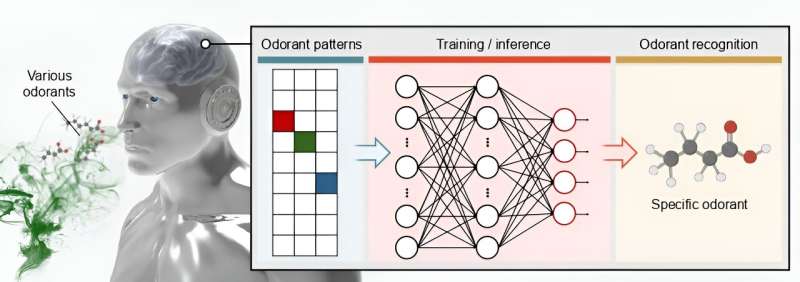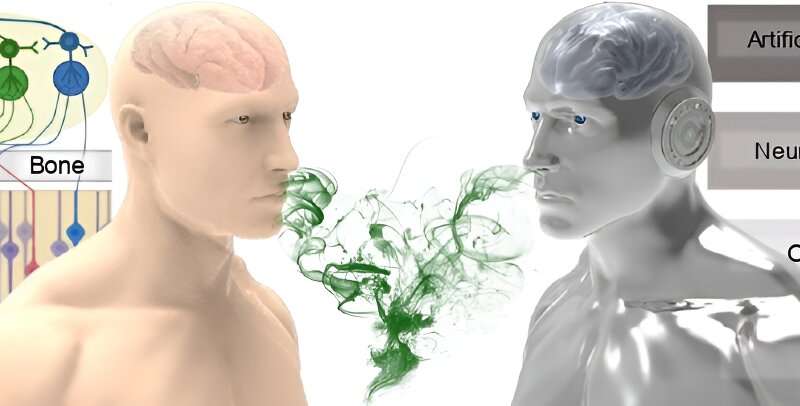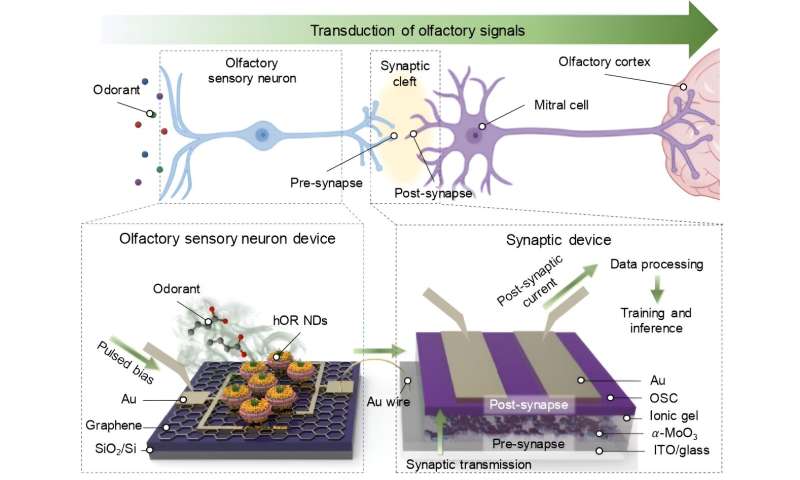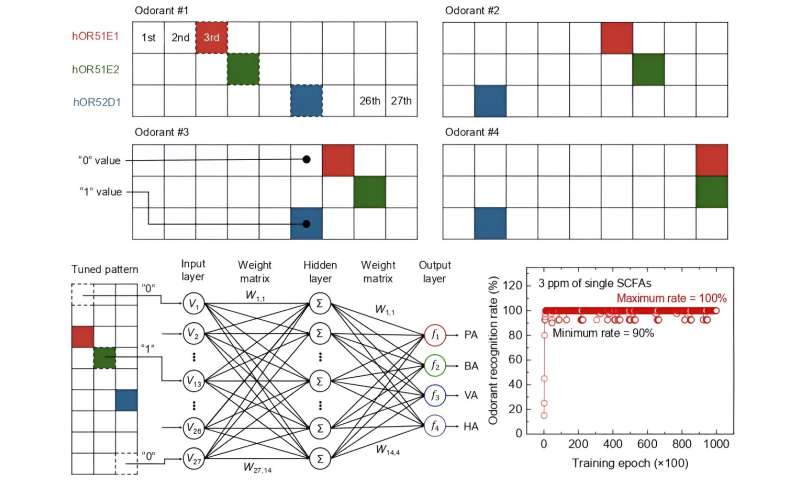May 24, 2024 report
This article has been reviewed according to Science X's editorial process and policies. Editors have highlighted the following attributes while ensuring the content's credibility:
fact-checked
peer-reviewed publication
trusted source
proofread
Combining human olfactory receptors with artificial organic synapses and a neural network to sniff out cancer

A team of chemical and biological engineers at Seoul National University in the Republic of Korea has developed a proof-of-concept device that could one day lead to the creation of an artificial nose.
In their study, published in the journal Science Advances, the group combined several types of technology to build a device capable of detecting short-chain fatty acids in air samples.
Scientists seek to enhance human-like robots with technology that can mimic the senses—cameras for eyes, for example, and probes embedded in artificial skin to mimic the sense of touch. One sense that has not advanced as much, however, is the sense of smell.
Existing devices are capable of detecting the presence of a predetermined molecule or compound in an air sample, but lack the ability to generalize. In this new effort, the research team sought to extend such capabilities by combining multiple types of established technology.
The device has three parts. The first part is a type of nanodisk containing modified human olfactory receptors grown using E. coli bacteria. The second part is a device that simulates neural synapses. And the third device is an artificial neural network.
When an air sample is supplied to the device, odorants in the sample bind to the olfactory receptors in unique ways. Information from the first device is passed to the second, which responds in predetermined ways that are deciphered by the artificial neural network.
-

Comparison of the human olfactory system and artificial olfactory system. Credit: Science Advances (2024). DOI: 10.1126/sciadv.adl2882 -

Correlation between the human olfactory system and artificial olfactory system. The artificial olfactory system consists of olfactory sensory neuron device and organic synaptic device. Credit: Science Advances (2024). DOI: 10.1126/sciadv.adl2882 -

Odorant patterns extracted from the artificial olfactory system, and artificial neural network used for training and inference simulations. The system exhibits remarkable precision in differentiating four different odorants at the molecular chain length level (90%–100%). Credit: Science Advances (2024). DOI: 10.1126/sciadv.adl2882
To determine which, if any, odorant is present in the air sample, the researchers trained the neural network with samples—in this case, short-chain fatty acids, which ranged from three carbon molecules to six.
The team chose four specific fatty acids that are known to be present in breath samples of people with certain types of gastric cancers. The device was 90% accurate in distinguishing between four types of fatty acids.
The research team plans to continue their work by adding more receptors.
More information: Hyun Woo Song et al, A pattern recognition artificial olfactory system based on human olfactory receptors and organic synaptic devices, Science Advances (2024). DOI: 10.1126/sciadv.adl2882
© 2024 Science X Network




















